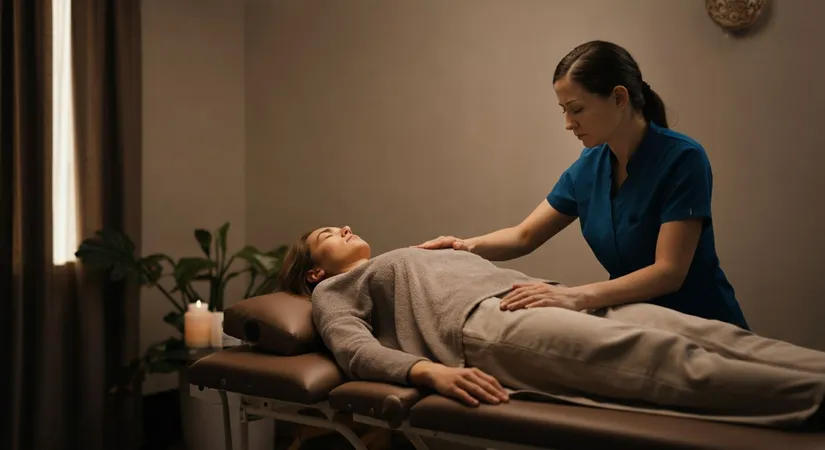Pressure Points: Unlocking the Secrets of Pain Relief and Relaxation
Unlock the secrets of pressure points for natural healing and stress reduction.
For centuries, cultures around the world have tapped into the remarkable healing powers of pressure points. These intriguing points on the human body are believed to unlock channels of energy, offering relief, rejuvenation, and balance. Understanding and mastering the use of pressure points is not just an ancient practice but a scientifically validated approach that supports modern wellness. Join us as we delve into the secrets of these natural healing techniques, and discover how they can be harnessed to improve well-being and relieve common health complaints.
Understanding What Pressure Points Are
The Role of Pressure Points in Energy Flow
Pressure points are integral to practices like acupressure therapy and reflexology, where they are believed to influence the body's energy flow. These points align with energy meridians, channels through which Qi, or life force, circulates. By applying pressure to these points, practitioners aim to balance energy flow, which can enhance overall well-being. For instance, the LI4 point, located between the thumb and index finger, is often used for headache relief. Studies have shown that stimulating this point can significantly reduce headache symptoms, showcasing the potential of pressure points in therapeutic settings.Key Benefits of Pressure Points
- Promotes relaxation by releasing tension and stress.
- Enhances circulation, improving nutrient and oxygen delivery to tissues.
- Supports pain relief, particularly for headaches and muscle tension.
How to Use Pressure Points for Pain Relief
- Identify the correct pressure point for your specific ailment.
- Apply firm, steady pressure using your fingers or a tool.
- Maintain pressure for 1-2 minutes, then release slowly.

Exploring Pressure Points for Specific Ailments
Targeting Headaches and Migraines
Utilizing pressure points for headache relief involves focusing on specific areas known to alleviate tension and pain. The LI4 point, located between the thumb and index finger, is renowned for its effectiveness in reducing headache symptoms. Applying firm pressure to this point can help diminish the intensity of headaches and migraines. Additionally, the GB20 point, situated at the base of the skull, is another effective area for relieving tension headaches. Regular stimulation of these points can lead to significant improvements in headache frequency and severity.Pressure Points for Digestive Health
Pressure points can also play a crucial role in improving digestive health. The P6 point, located on the inner wrist, is commonly used to alleviate nausea and vomiting. This point is particularly beneficial for individuals experiencing motion sickness or morning sickness during pregnancy. Another important point is the ST36, found below the knee, which is known to enhance digestion and relieve stomach discomfort. By incorporating these pressure points into daily routines, individuals can experience better digestive function and reduced gastrointestinal issues.Effective Techniques for Pressure Point Stimulation
- Identify the specific pressure point related to your ailment.
- Use your thumb or index finger to apply steady pressure.
- Hold the pressure for 1-2 minutes, then release gently.
Benefits of Regular Pressure Point Practice
- Enhances overall well-being by promoting relaxation and reducing stress.
- Improves circulation, aiding in the delivery of nutrients and oxygen to tissues.
- Provides natural pain relief, particularly for headaches and digestive issues.

Exploring Acupressure Therapy Techniques
Understanding Shiatsu and Its Benefits
Shiatsu, a form of acupressure therapy originating from Japan, emphasizes the use of fingers, palms, and elbows to apply pressure on specific points. This technique aims to balance the body's energy, promoting relaxation and reducing stress. A unique aspect of Shiatsu is its focus on the meridian system, which is believed to channel life energy, or Qi, throughout the body. By targeting these meridians, practitioners can address various health concerns, such as muscle tension and fatigue. For example, applying pressure to the Hegu point can alleviate tension headaches, while the Zusanli point can enhance digestive health.Key Techniques in Acupressure Therapy
- Finger Pressure: Utilizes fingertips to apply steady pressure on specific points.
- Palm Pressure: Involves using the palm to cover larger areas for relaxation.
- Elbow Pressure: Applies deeper pressure for muscle tension relief.
Steps to Master Acupressure Techniques
- Learn the meridian map to identify key pressure points.
- Experiment with different pressures and angles for effectiveness.
- Tailor treatments to address specific health concerns.
The Role of Reflexology in Stress Reduction
Understanding Reflexology's Impact on Stress
Reflexology, a therapeutic practice involving the application of pressure to specific areas on the feet, hands, or ears, plays a significant role in stress reduction. This technique is based on the principle that these areas correspond to different organs and systems within the body. By stimulating these pressure points, reflexologists aim to promote relaxation and balance, which can lead to a decrease in stress levels.Key Benefits of Reflexology for Stress Relief
- Enhances relaxation by activating the parasympathetic nervous system.
- Reduces anxiety through the release of endorphins, the body's natural stress relievers.
- Improves sleep quality, which is often disrupted by stress.
Steps to Incorporate Reflexology into Your Routine
- Identify the reflex points related to stress relief, such as those on the feet.
- Apply gentle pressure using your thumb or fingers, focusing on each point for 1-2 minutes.
- Incorporate these sessions into your weekly routine for optimal benefits.
Unlocking the Power of Pressure Points for Holistic Healing
Enhancing Well-being Through Reflexology and Stress Reduction
Frequently Asked Questions
What are pressure points and how do they work?
How can pressure points be used for headache relief?
What is the difference between acupressure therapy and reflexology?
Are there any risks associated with using pressure points?
How often should one practice acupressure or reflexology for optimal benefits?
Discover the path to "Healthy Beauty" with estethica's expert care. Call now for your free consultation and step into a world of advanced aesthetic solutions.
📞 Call for Your Free Consultation